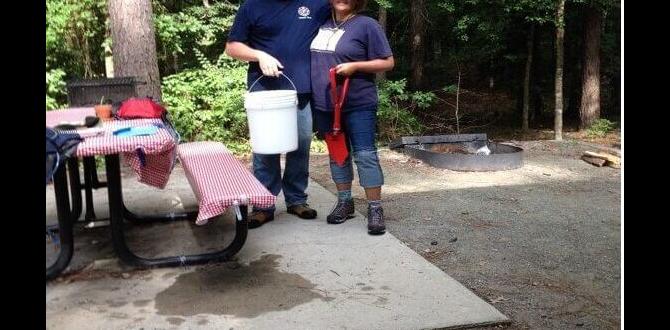Your Arusha Winter Trip Guide: Prepare for an unforgettable adventure with practical tips for comfort and ease, ensuring a seamless journey to Tanzania’s safari hub.
Dreaming of a Tanzanian adventure? Arusha, the gateway to some of Africa’s most iconic wildlife destinations, offers a unique experience even during its cooler months. Traveling here might seem daunting, especially if you’re wondering about packing or what to expect. But don’t worry! This guide is designed to make your Arusha winter trip smooth and enjoyable. We’ll cover everything you need to know, from the best time to visit and what to pack to essential tips for comfort and safety. Get ready to explore the magic of Arusha with confidence!
When is “Winter” in Arusha?
When we talk about “winter” in Arusha, it’s important to understand that Tanzania, being near the equator, doesn’t experience winter in the same way many countries do. Instead, Arusha has a distinct dry season, which typically runs from June through September and into October. This period is often referred to as Arusha’s “winter” because the temperatures are cooler, especially during the mornings and evenings, and the skies are generally clear. It’s a fantastic time for safaris and exploring, with comfortable weather for outdoor activities.
Your Arusha Winter Packing List: Comfort is Key
Packing for Arusha during the dry season requires a balance. While daytime temperatures can still be pleasant, mornings and evenings can get surprisingly chilly, especially on game drives. The key is layering. Here’s a breakdown of what you absolutely must bring:
Clothing: Think Layers, Layers, Layers!
The goal is to be comfortable whether you’re in the warm sun or a cool breeze. Opt for breathable fabrics that can be easily added or removed.
- Base Layers: Lightweight, moisture-wicking tops and bottoms. Think thermal wear if you’re particularly sensitive to cold, especially for early morning game drives.
- Mid Layers: Fleece jackets, sweaters, or hoodies. These are perfect for adding warmth without bulk.
- Outer Layers: A warm, windproof, and waterproof jacket is essential. This will protect you from the chill and any unexpected, brief rain showers. A light puffer jacket or a good quality rain shell works wonders.
- Tops: Long-sleeved shirts and t-shirts. Pack a mix. Long sleeves offer sun protection during the day and warmth in the cooler hours.
- Bottoms: Comfortable trousers or hiking pants. Avoid jeans as they can be heavy and slow to dry if they get damp. Cargo pants are practical for carrying small items. Consider one pair of slightly warmer trousers for evenings.
- Warm Accessories: A warm hat (beanie), gloves, and a scarf or buff are invaluable for those cold mornings and evenings on safari.
- Sleepwear: Pack warm pajamas as lodge or tent temperatures can drop significantly at night.
Footwear: Ready for Anything
Comfortable, sturdy shoes are a must for walking safaris, exploring towns, and simply being on your feet.
- Hiking Boots or Sturdy Walking Shoes: Broken-in and comfortable, these are ideal for any walking safaris or if you plan to do any hiking.
- Comfortable Sneakers or Walking Shoes: For casual wear around lodges, towns, or for shorter walks.
- Socks: Plenty of warm socks. Wool or synthetic blends are best for wicking moisture and providing warmth.
- Camp Shoes or Sandals: Lightweight and easy to slip on for relaxing at your accommodation.
Safari-Specific Gear: Maximizing Your Experience
These items will enhance your safari adventures.
- Binoculars: Absolutely crucial for spotting wildlife at a distance. Invest in a good pair; it makes a huge difference.
- Camera and Extra Batteries/Memory Cards: You’ll want to capture every moment! Ensure you have enough storage and power. Consider a telephoto lens if you have one.
- Sunscreen (High SPF): The sun is strong, even when it’s cooler.
- Insect Repellent: Essential, especially for evenings and early mornings. Look for repellents with DEET or Picaridin for effectiveness.
- Sunglasses: Protect your eyes from the sun.
- Wide-Brimmed Hat: Provides excellent sun protection for your face and neck.
- Daypack: A small, comfortable backpack to carry essentials like water, snacks, camera, sunscreen, and a light layer during game drives.
- Reusable Water Bottle: Stay hydrated and reduce plastic waste. Many lodges offer filtered water for refills.
Personal Care and Staying Comfortable
Don’t forget these personal items that contribute to your well-being on a trip.
- Basic First-Aid Kit: Including bandages, antiseptic wipes, pain relievers, and any personal medications.
- Hand Sanitizer: Always useful when you’re on the go.
- Travel-Sized Toiletries: Pack your preferred items, though most lodges provide the basics.
- Lip Balm with SPF: Protect your lips from sun and wind.
- For those needing them: Consider travel-friendly incontinence products like Depend adult disposable briefs or youth briefs if traveling with children who may need them. These are designed for discreet and comfortable protection during travel, ensuring peace of mind whether on long flights or during active excursions. Packing an adequate supply is crucial for a stress-free journey.
Documents and Money: Keep Them Secure
Essential for any trip.
- Passport and Visa: Ensure they are valid and easily accessible. Make copies and store them separately.
- Flight Tickets and Hotel Reservations: Store digital and/or printouts.
- Travel Insurance Details: Always a wise precaution.
- Cash (USD): Some US dollars in small denominations are useful for tips and small purchases. It’s also good to have some local currency, Tanzanian Shilling (TZS), obtained upon arrival or from ATMs. Major credit cards are accepted in most tourist establishments.
- Emergency Contact Information: Keep a list of important numbers handy.
Understanding Arusha’s Unique Weather Patterns
Arusha’s weather is primarily divided into two main seasons: the wet season and the dry season. As mentioned, the dry season (June to October) is what we commonly associate with “Arusha winter.” Temperatures during this period typically range from highs of around 25°C (77°F) to lows that can dip to 10-15°C (50-59°F) in the early mornings and late evenings. This makes it a much more comfortable time for safaris and outdoor activities compared to the heat of the wet season.
The wet season, on the other hand, usually spans from March to May, with a shorter, less intense rain period from November to December. During the wet season, temperatures are warmer, and humidity is higher. So, the “winter” months offer a reprieve from the heat, making it an ideal time for wildlife viewing as animals tend to congregate around water sources, and vegetation is less dense, offering better visibility.
Must-Do Activities in Arusha During Your Winter Trip
Arusha is more than just a transit point; it’s a destination in itself with a wealth of experiences. The cooler, drier winter months are perfect for exploring these attractions.
Serengeti National Park & Masai Mara National Reserve
While the iconic Great Migration can be seen in different parts of the Serengeti and Masai Mara throughout the year, the dry season months (June-October) often see large herds of wildebeest and zebras moving north through the western and central Serengeti. This is considered prime time for witnessing river crossings, particularly in the Grumeti River region, where crocodiles lie in wait. The weather is generally clear, offering excellent game viewing opportunities.
Ngorongoro Conservation Area
The Ngorongoro Crater is a UNESCO World Heritage Site and a must-visit. Its unique caldera hosts an incredible concentration of wildlife, including the rare black rhinoceros. The dry “winter” months are excellent for game drives here, as precipitation is minimal, and the animals are easily spotted on the open crater floor. The cooler temperatures also make descending into the crater more comfortable.
Tarangire National Park
Known for its large elephant herds and iconic baobab trees, Tarangire is particularly spectacular during the dry season. As other water sources dry up, elephants, along with many other species, flock to the Tarangire River. This concentration of wildlife makes for unparalleled game viewing. The cooler temperatures are also a plus for exploring this vast park.
Mount Kilimanjaro & Mount Meru
While climbing Kilimanjaro is a serious undertaking, the dry season from June to October is considered the best time to attempt the climb. The weather is typically stable, with clear skies offering spectacular views and less risk of precipitation on the mountain. For a less strenuous experience, hiking on the lower slopes of Mount Meru, or even just viewing it from Arusha, is highly recommended. The cooler air of Arusha’s “winter” makes these activities more pleasant.
Lake Manyara National Park
Famous for its tree-climbing lions and diverse birdlife, Lake Manyara offers a beautiful landscape of woodland, grassland, and lake. The dry season improves game viewing, and you can easily spot elephants, giraffes, zebras, and a plethora of birds. The cooler temperatures make walking around the park’s perimeter or enjoying a canopy walk much more enjoyable.
Arusha National Park
This park is a gem close to the city, featuring Mount Meru, Momella Lakes, and Ngurdoto Crater. It’s ideal for day trips or short stays. You can enjoy walking safaris, canoeing, and game drives. The “winter” months provide clear views of Mount Meru and excellent opportunities to see diverse birdlife and mammals like buffaloes, giraffes, and monkeys in a less humid environment.
Cultural Experiences in Arusha Town
Arusha town itself offers vibrant markets, local eateries, and cultural centers. The cooler weather is perfect for exploring the bustling Arusha Central Market, visiting the Tanzanite Museum, or enjoying a coffee at a local café. It’s also a great chance to interact with the friendly locals.
Navigating Your Arusha Winter Trip: Essential Tips
Beyond packing, a few practical tips can significantly enhance your comfort and enjoyment during your Arusha winter trip.
Stay Hydrated
Even though the temperatures are cooler, the dry air and active days on safari can still lead to dehydration. Drink plenty of water throughout the day. Carry a reusable water bottle and refill it whenever possible. Many lodges provide purified water stations.
Sun Protection is Crucial
The sun’s rays are strong at this altitude and latitude, even during the cooler months. Always wear sunscreen (SPF 30 or higher), a wide-brimmed hat, and sunglasses. Long sleeves and trousers also provide excellent sun protection during game drives.
Prepare for Temperature Fluctuations
Mornings and evenings can be quite cold, especially on open safari vehicles. Layering is your best strategy. Start your day with your warm outer layers and remove them as the day warms up. Carry an extra layer in your daypack.
Insect Bite Prevention
Malaria risk is generally lower during the dry season, but mosquitoes are still present, especially at dawn and dusk. Use insect repellent with DEET or Picaridin on exposed skin, wear long sleeves and trousers, and consider using mosquito nets if provided in your accommodation.
Respect Wildlife and Local Culture
Always follow your guide’s instructions regarding wildlife. Maintain a safe distance and never feed the animals. When visiting local communities, dress modestly out of respect for their customs. A smile and a friendly greeting go a long way.
Connectivity and Staying Connected
Wi-Fi availability can vary greatly, from reliable connections in lodges to limited service in remote areas. Consider purchasing a local SIM card upon arrival in Tanzania if you need consistent connectivity. However, embrace the opportunity to disconnect and immerse yourself in the natural surroundings.
Tipping Etiquette
Tipping is customary for safari guides, lodge staff, and drivers. It’s a way to show appreciation for good service. Your tour operator can provide specific recommendations on fair tipping amounts.
Comfortable Travel for All: Addressing Specific Needs
When traveling with children, especially those who require extra support, planning is key. For instance, if you’re traveling with a child who uses adult diapers or training pants for discreet and reliable protection, pack more than you think you’ll need. These products are essential for maintaining comfort and confidence throughout long travel days or during active safaris. Similarly, adults who benefit from incontinence management products will find that planning ahead for the trip ensures stress-free exploration.
Choosing the Right Accommodation and Planning Your Itinerary
Arusha and its surrounding areas offer a range of accommodation options, from luxury lodges and tented camps to more budget-friendly guesthouses. During the dry season, popular safari circuits tend to book up, so advance planning is highly recommended.
Accommodation Options
Your choice of accommodation will depend on your budget and preferred comfort level.
- Luxury Lodges & Camps: Offer top-tier amenities, gourmet dining, and prime locations.
- Mid-Range Hotels & Lodges: Provide comfortable stays with good service, often in convenient locations.
- Budget Guesthouses & Hostels: Excellent for budget-conscious travelers, offering basic but clean accommodations.
- Tented Camps: For a more immersive safari experience, these range from luxurious safari tents to more rustic options.
Sample Arusha Winter Itinerary Structure (7 Days)
This is a flexible structure; tailor it to your interests.
| Day | Focus | Activities | Notes |
|---|---|---|---|
| 1 | Arrival in Arusha | Arrive at Kilimanjaro International Airport (JRO), transfer to your Arusha hotel. Relax and acclimatize. | Consider a short town tour if time permits. |
| 2 | Arusha National Park | Full-day game drive, walking safari around Mt. Meru foothills, explore Ngurdoto Crater and Momella Lakes. | Great for birdwatching and diverse landscapes. |
| 3-5 | Serengeti National Park | Fly or drive to Serengeti. Morning and afternoon game drives, search for the Great Migration. | Focus on central or western Serengeti for potential river crossings. |
| 6 | Ngorongoro Crater | Descend into the Ngorongoro Crater for a full-day game drive. | High chance to see the Big Five, including rhinos. |
| 7 | Departure | Enjoy a final Tanzanian breakfast, transfer back to Kilimanjaro International Airport (JRO) for your departure. | Allow ample time for your flight. |



